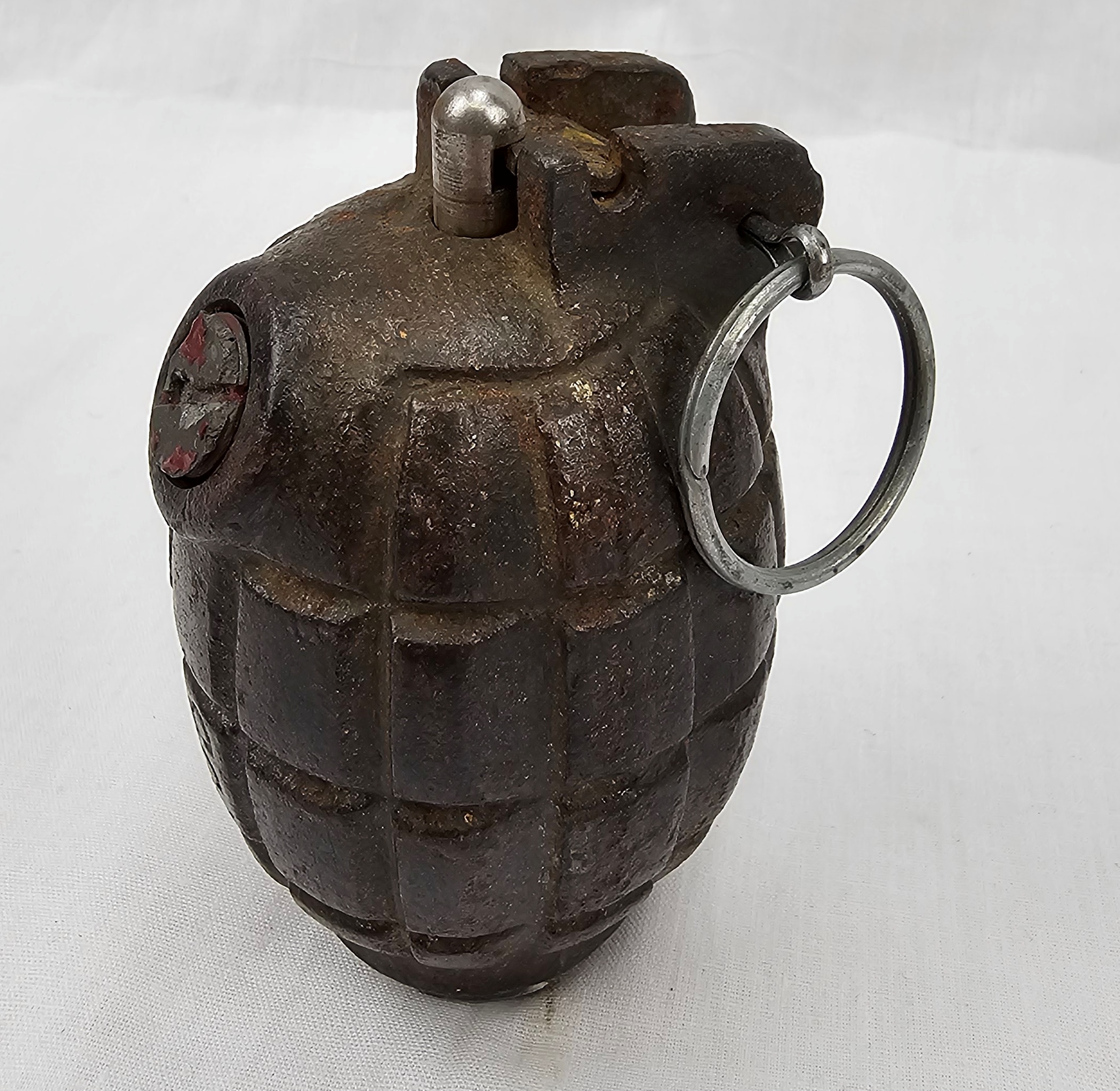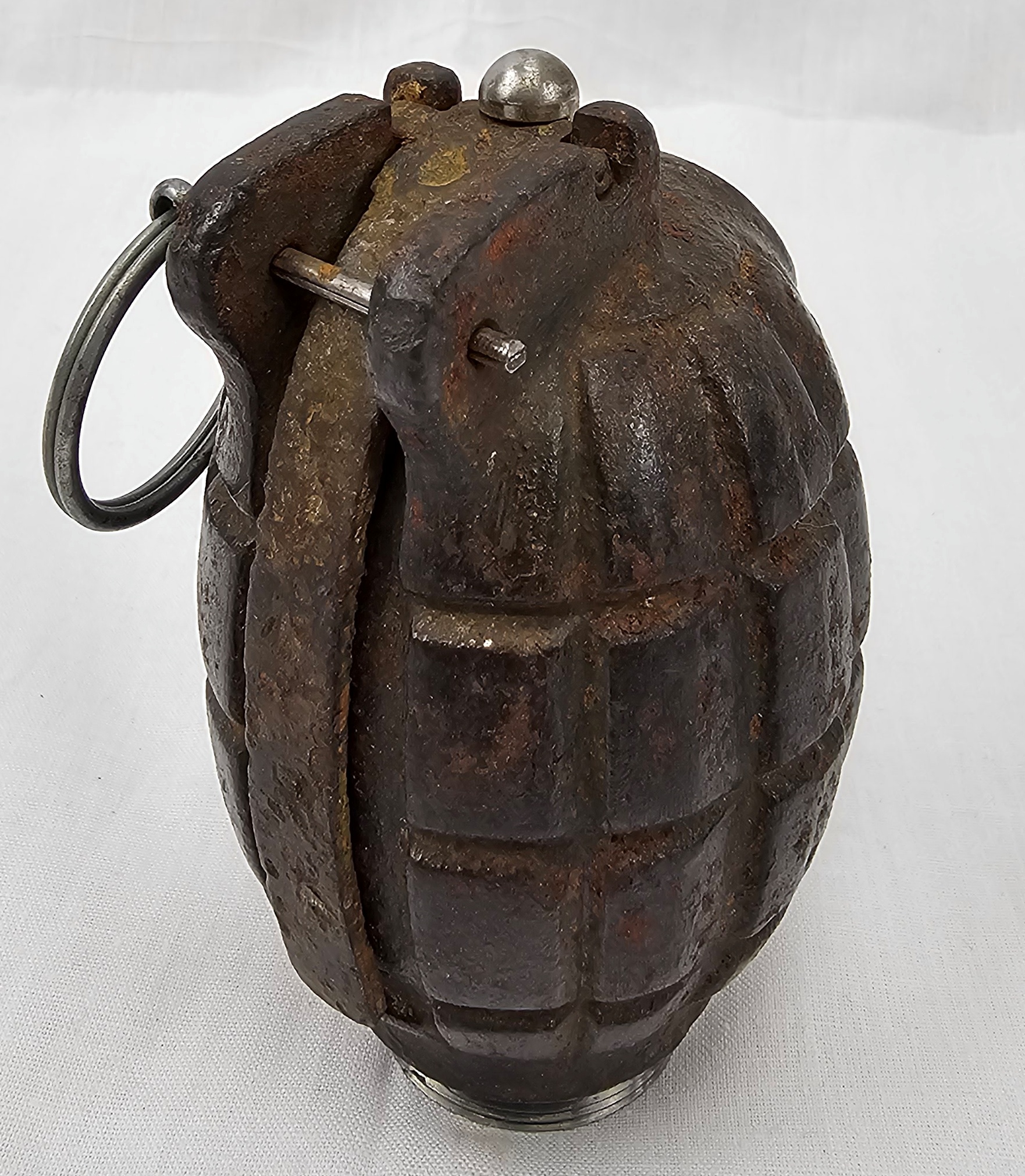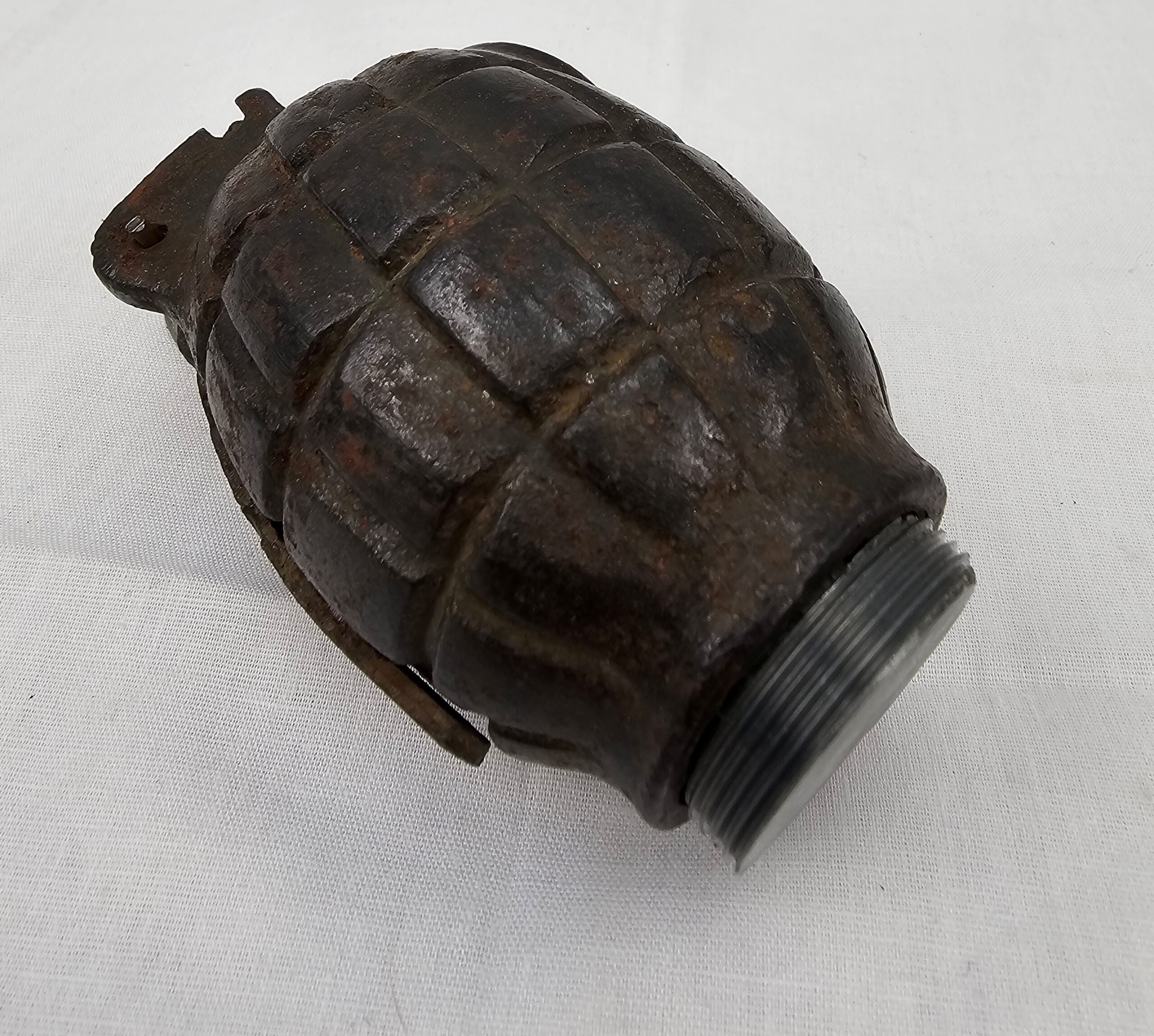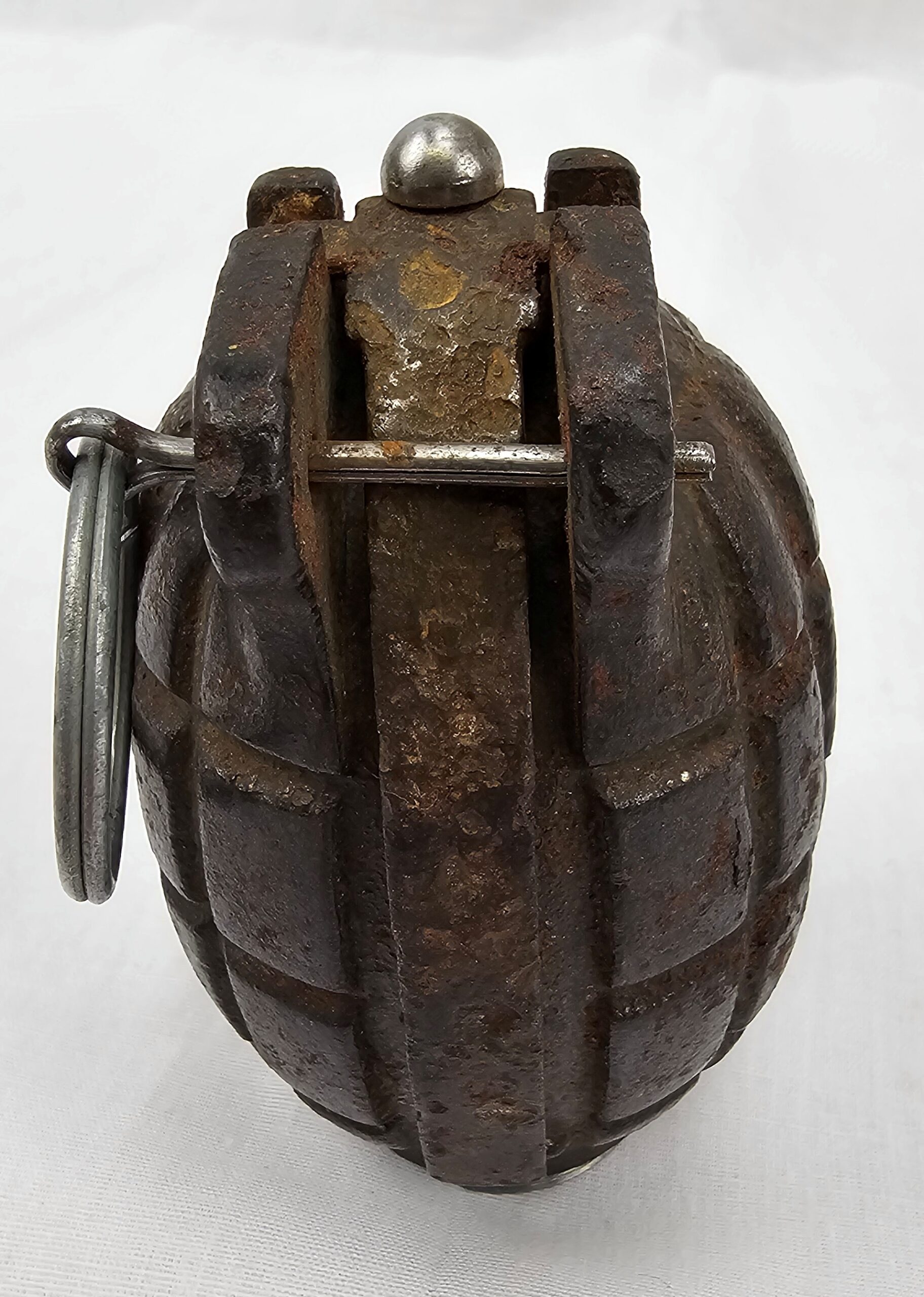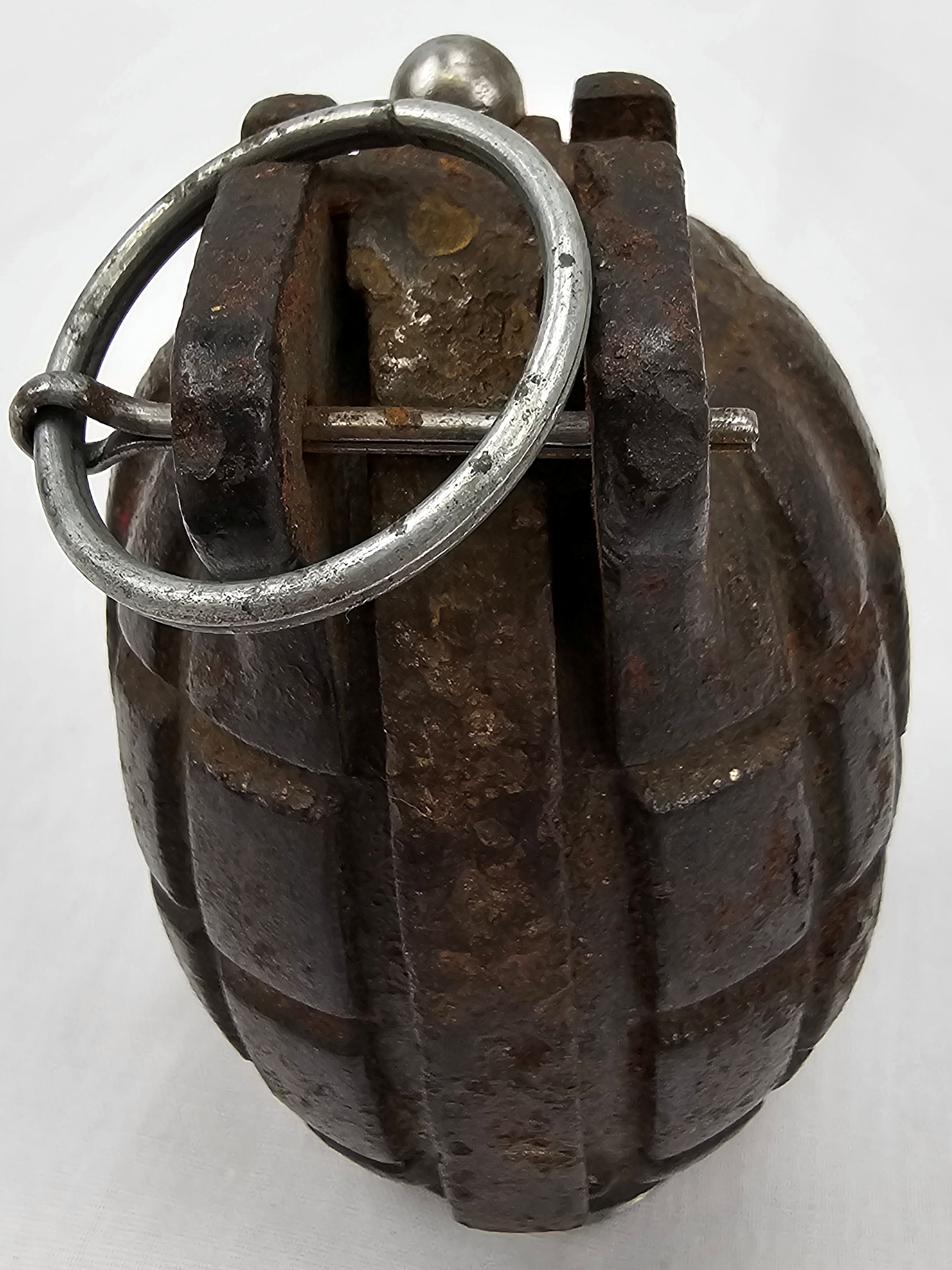~ British WW2 No 36 Mk 1 Mills Bomb ~
The Mills No. 36 grenade was developed in May 1918, and was in service in the British Army until the 1960s.
The “Mills bomb” series of British hand grenades, designed by William Mills, were groundbreaking fragmentation grenades used extensively by the British Army in both World Wars. The development of the Mills bomb took place in 1915 at the Mills Munitions Factory in Birmingham, England. It drew inspiration from an earlier design by Belgian captain Leon Roland, leading to a patent dispute. The British Army adopted the Mills bomb as their standard hand grenade, initially known as the No. 5. It has a time delay of 4 or 7 seconds depending on the version. On the Great War battlefields, the Germans sometimes returned the British grenades with a delay of 7 seconds. For the Second World War, only the 4-second versions were produced and endowed in the British army. The grenade underwent several modifications, including the No. 23 with a rodded base plug for rifle firing.
The notable variant, the No. 36, featured a detachable base plate for use with a rifle discharger cup. The final version, the No. 36M, was specifically designed and waterproofed for the hot climate of Mesopotamia. Despite the designation as a defensive grenade, Mills bombs were often used offensively as well. The No. 36 had a throwing range of approximately 30 yards (27 meters) and a danger area of about 100 yards (91 meters).
After World War II, the British Armed Forces replaced the Mills bomb with grenades featuring segmented coiled wire in smooth metal casings. However, the No. 36M remained in service in some regions like India and Pakistan until the 2000s. The Mills bomb continued to see combat use, with the last major operator being India, which replaced it with a new Multi-Mode Hand Grenade in August 2021.
~ Condition ~
Please refer to the images for the condition. The piece is complete.
~ Dimensions ~
The grenade is 9.75 cm (3.75 inches) tall.


